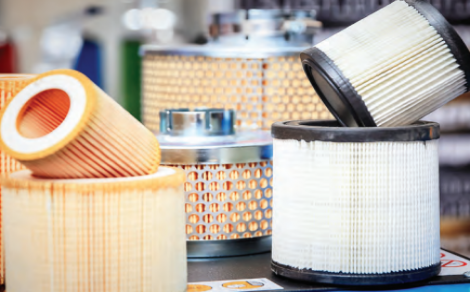- Home » Editorial » Hydraulics
Balancing filtration efficiency and filter life in hydraulic systems

Hydraulic system reliability hinges on effective contamination control. Filters, as the frontline defence against wear-causing particles, play a pivotal role in maintaining system health. But the selection of a filter is rarely straightforward. The trade-off between filtration efficiency and filter life is often overlooked, yet it has direct consequences for system performance, maintenance intervals, and long-term operating costs. H&P reports.
The assumption that maximum filtration efficiency always equates to better protection can be misleading. In practice, a highly efficient filter that captures very fine particles may also reach its dirt holding capacity much faster, triggering bypass conditions or requiring frequent replacement. On the other hand, a filter with a longer service life might allow more contaminants to circulate, increasing the risk of component wear over time. Understanding this balance is essential to selecting filters that suit the operational requirements and risk tolerance of a specific application.
The efficiency curve
Filtration efficiency is typically measured using the Beta ratio, which quantifies the filter’s ability to remove particles of a certain size. For example, a Beta(10) rating of 200 means the filter captures 99.5% of particles 10 microns or larger. While this might appear ideal, it can come at the cost of significantly increased pressure drop and reduced service life.
A higher efficiency filter generally features tighter media, which restricts flow more than a lower efficiency equivalent. This increases the differential pressure across the element, especially as it loads with contamination. If the pressure drop exceeds the system’s design limits, it can result in the bypass valve opening, allowing unfiltered fluid to re-enter the system. Ironically, a highly efficient filter may end up offering little to no protection if bypassing becomes frequent.
Service life considerations
Filter life is not defined by a set number of operating hours but by how long the filter can function effectively before reaching a critical pressure drop or becoming clogged. This life span is affected by fluid cleanliness targets, the volume of contamination present system pressure, fluid viscosity, and the physical construction of the filter media.
A longer-life filter is not necessarily one with lower efficiency. Some advanced filter media use multi-layered or depth-loading construction to trap particles throughout the media, rather than just on the surface. These designs extend dirt-holding capacity without severely compromising flow, although they may come at a higher cost.
System operators should be wary of relying solely on published efficiency ratings or expected service intervals. Field conditions vary, and actual performance depends heavily on factors such as start-stop frequency, fluid degradation, and ambient contamination sources.
Application-riven decisions
The trade-off between efficiency and life must be evaluated against the needs of the specific application. In high-pressure or precision systems—such as those found in aerospace, medical equipment, or injection moulding—high-efficiency filtration may be non-negotiable. The risk of particle-induced failure justifies more frequent filter changes and the associated downtime.
In contrast, in systems with less critical tolerances or intermittent operation, slightly lower efficiency filters with longer life might be more appropriate. Mobile machinery, for instance, often faces variable contamination loads and benefits from filters with greater dirt-holding capacity and robust bypass mechanisms.
-
SMART Manufacturing & Engineering Week
04 - 05 June, 2025
NEC, Birmingham UK -
PPMA 2025
23 September, 2025, 9:30 - 25 September, 2025, 16:00
NEC, Birmingham UK -
Advanced Engineering Show 2025
29 October, 2025, 9:00 - 30 October, 2025, 16:00
NEC, Birmingham UK










